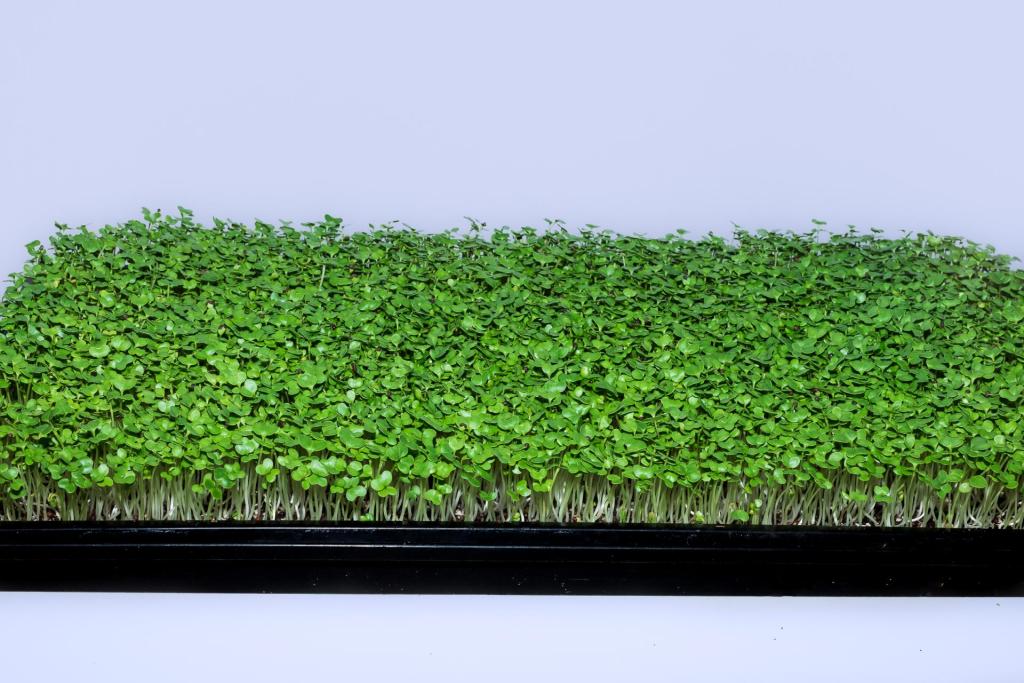
Available to anyone in Medford, Oregon and the surrounding areas. We sell microgreens by the ounce, whether you want a one time purchase or automated deliveries. We also offer flats and half flats to those who want fresh greens on demand.
send us an email - healthyfreezedried@gmail.com
or give us a call (541) 821-6461
We would be happy to get you what you need!
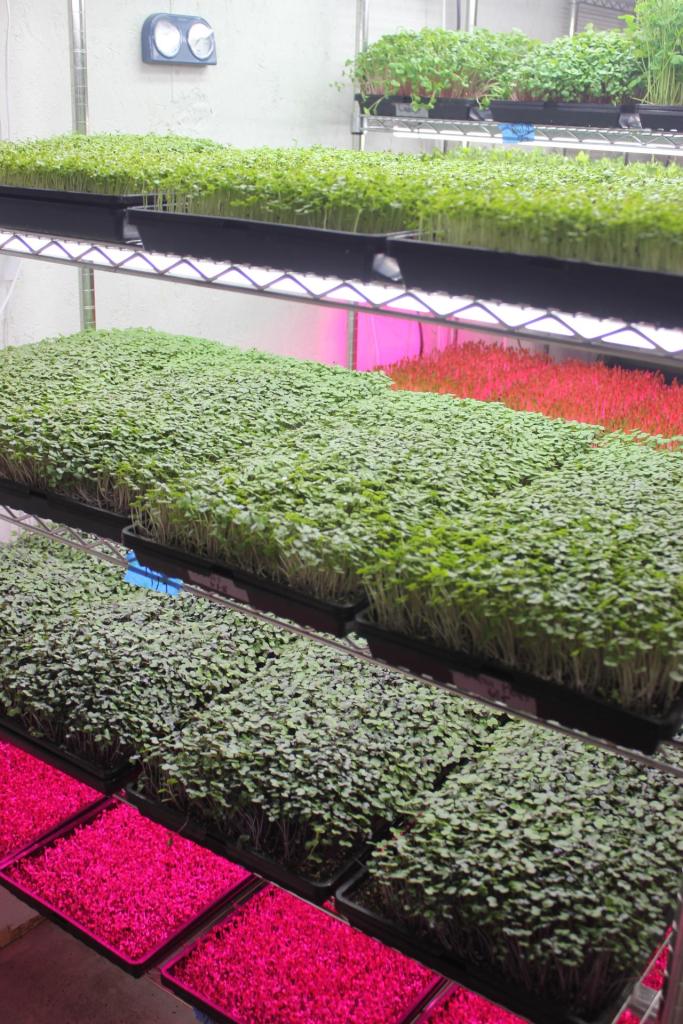
The ancient Greek physician Hippocrates, often regarded as the father of medicine, famously stated, "Let food be thy medicine and medicine be thy food." This concept is particularly relevant in the context of chronic diseases like heart disease and diabetes, where the healing potential of food is increasingly recognized. Foods can play a significant role in maintaining and restoring health.
Among these beneficial foods are microgreens, often grouped with other "medicinal foods" such as seaweed, nutritional yeast, juicing grasses like wheatgrass, and herbs. These foods are known for offering specific health benefits similar to synthetic medications. A study published in the Journal of Oxidative Medicine and Cellular Longevity in 2009 highlighted the long-term benefits of diets rich in plant polyphenols. These diets can protect against a range of conditions including cancer, cardiovascular diseases, diabetes, osteoporosis, and neurodegenerative diseases.
Polyphenols, natural compounds found in many foods, are praised for their strong antioxidant properties. Antioxidants are crucial in preventing the accumulation of harmful free radicals, reactive compounds that can damage cells and contribute to chronic diseases. Research has linked polyphenols to a lower risk of heart disease, cancer, and Alzheimer's disease. A 2013 study in Maryland focusing on five microgreens from the Brassica vegetable family, including red cabbage, purple kohlrabi, mizuna, and red and purple mustard greens, found these microgreens to be rich sources of polyphenols, even more so than their fully-grown vegetable forms.
Incorporating microgreens into a balanced diet, along with a healthy lifestyle and regular physical activity, could be beneficial for heart health. Just a serving or two of microgreens each day might significantly contribute to keeping your heart robust and well-functioning.
If you're looking for ideas of how to eat microgreens, here are some easy recipes you can try:
Red Cabbage Microgreens
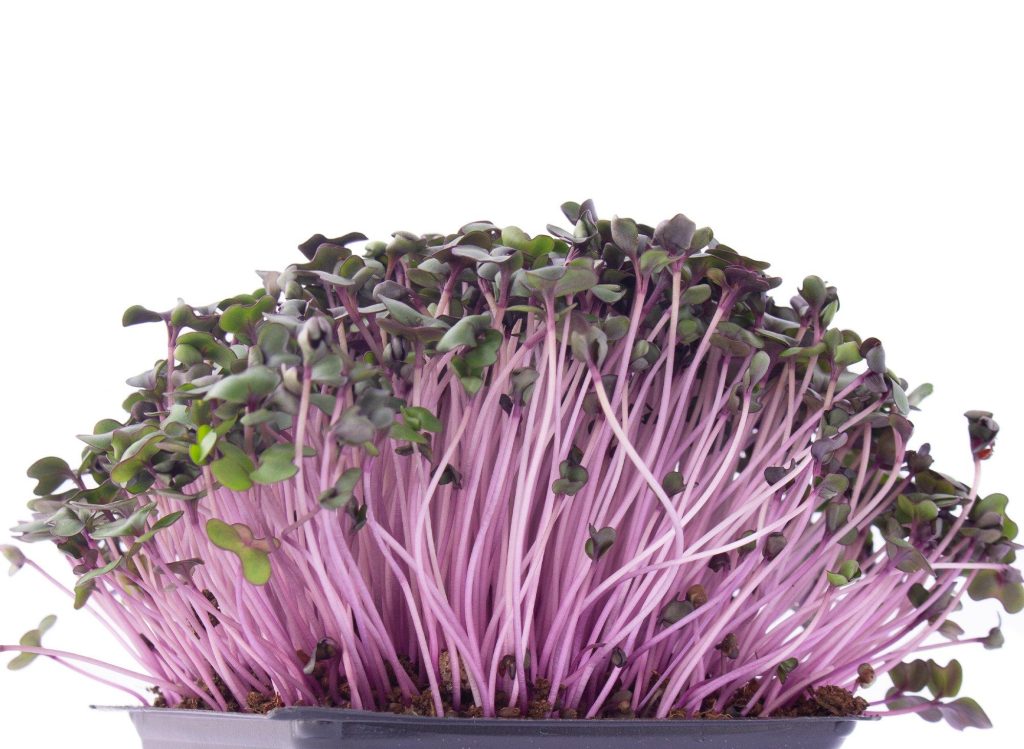
Gorgeous purple hue and mild taste makes this a staple. It not only brightens up the salad, but it tastes great too! Good anti inflammatory, aids digestion, helps lower blood pressure & cholesterol.
Latin Name: Brassica oleracea capitata rubra
Color: Whitish stems and green cotyledons with red to purple highlights
Flavor: Light, mild but refreshing flavour
Texture: Crunchy and juicy
Nutrients: High in vitamins A, B-6, C, Potassium, Sodium
Beet Detroit Dark Red Microgreens
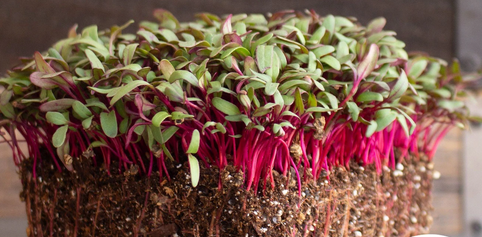
The bright stems and leaves look fantastic on any dish! Beets have so many healthy qualities! Alleviates hypertension and cardiovascular disease. Powerful detoxifying and antioxidant properties. Improves immune functions. Aids in preventing stroke, heart disease, risk of Type II diabetes and epileptic seizures. Stress relief. Slows the aging process.
Latin Name: Beta vulgaris
Color: Vibrant red stem with a nearly neon green top
Flavor: Sweet and earthy
Texture: Crunchy and juicy
Nutrients: Vitamins A, B, C, E, and K, calcium, magnesium, potassium, iron, zinc, and protein
Organic Green Pea Sprouting Microgreens
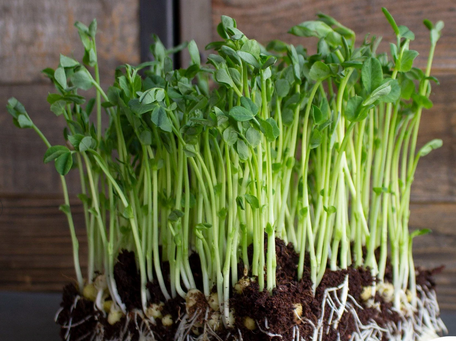
These pea microgreens get nice and tall, with a beautiful vibrant green color. They are sweet, taste strongly of fresh peas, and the tendrils they grow make them look like living lace. This variety has the biggest crunchiest tendrils and can keep for weeks! Pea microgreens can aid in diabetes, cancer prevention and overall heart health. They are high in antioxidants and phytonutrients, which are necessary in supporting the body's inflammation system.
Latin Name: Pisum sativum
Color: Green
Flavor: Sweet, fresh pea taste
Texture: Crunchy and succulent
Nutrients: Vitamins A, C, E, B1, B2, B3, B6, protein, fiber, omega-3 and micronutrients
Broccoli Microgreens
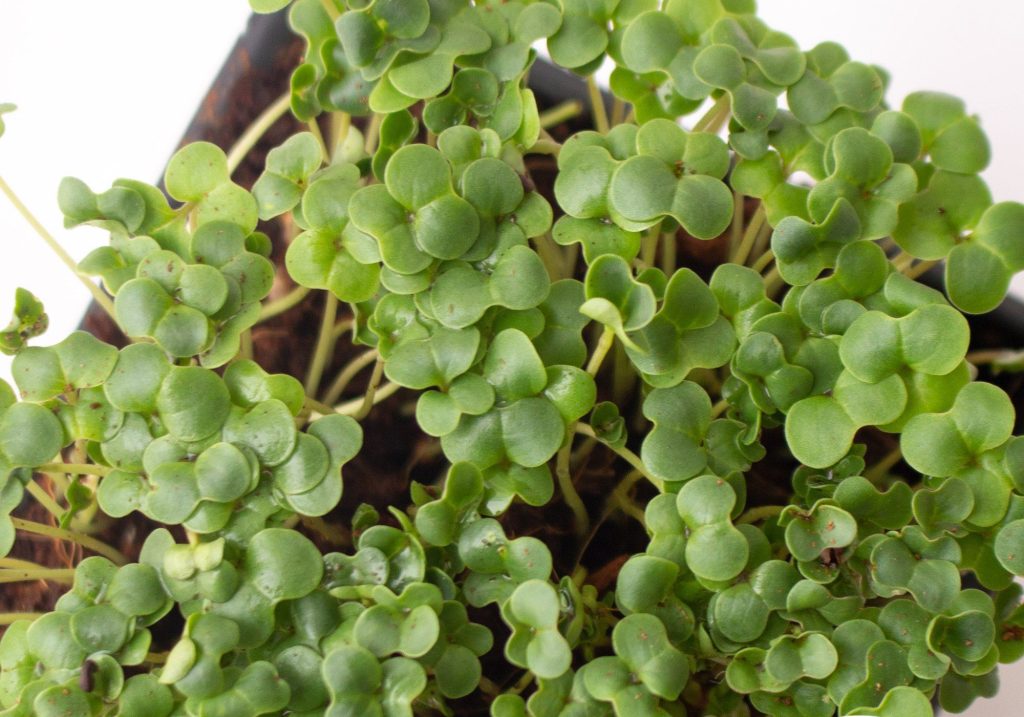
Broccoli microgreens have a high sulforaphane content with a mild broccoli flavor. Non-GMO. It is a hardy and substantial microgreen that has a fresh, mild cabbage flavor. They are also favored for their health benefits, being a great source of sulforaphane. It is an excellent choice as a base for any micro greens salad.
Latin Name: Brassica oleracea
Color: Thin white stem with shades of green on top
Flavor: Fresh, mild broccoli or cabbage flavor
Texture: Soft
Nutrients: Vitamins A and C, sulforaphane, calcium, iron, and phosphorus
China Rose Sprouting Radish Microgreens
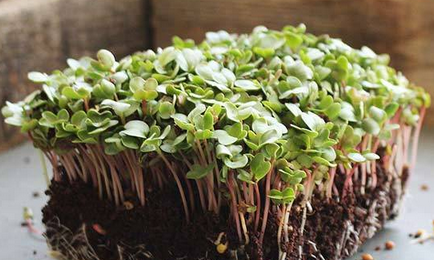
Radish microgreens are packed with nutritional benefits! Anti-inflammatory, which reduces swelling and pain in the body. Natural diuretic, which can aid in reducing blood pressure. Helps detoxify and cleanse the body. Relief of indigestion or flatulence. Radish is a green with an intense radish flavor. Use in any dish in place of sliced radish.
Latin Name: Raphanus sativus
Color: Vibrant pink stem with a deep green top
Flavor: Spicy & floral with a hint of sweetness
Texture: Crunchy and succulent
Nutrients: Vitamins A, B, C, E, & K, folic acid, niacin, potassium, iron, phosphorus, pantothenic acid, calcium, magnesium, zinc, carotenes
Speckled Pea Microgreens
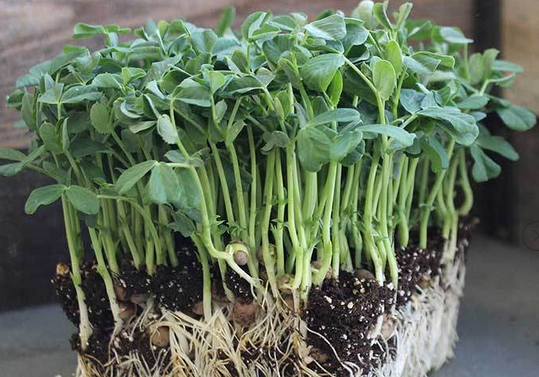
The speckled pea microgreens feature a traditional sweet, green pea flavor. Very nutritious, delicious and inexpensive addition to sandwiches and salads. People love the fresh taste and texture! Pea microgreens can aid in diabetes, cancer prevention and overall heart health. They are high in antioxidants and phytonutrients, which are necessary in supporting the body's inflammation system.
Latin Name: Pisum sativum
Color: Green
Flavor: Sweet, fresh pea taste
Texture: Crunchy and succulent
Nutrients: Vitamins A, C, E, B1, B2, B3, B6, protein, fiber, omega-3 and micronutrients
Tokyo Long White Bunching Onion Microgreens

Tokyo long white bunching onion microgreens are very rich in flavor and nutrients. Put just a couple greens in a soup, sandwich or salad and taste the flavor! Seed hulls are left on to provide an additional crunch. Best to start tasting small amounts so you can gauge how strong they really are!
Latin Name: Allium fistulosum
Color: Light Green
Flavor: Full Onion Flavor, Similar to Chives
Texture: Soft (extra crunch provided by seed hulls)
Nutrients: Vitamins A, B, C, E, and K, folic acid, niacin, potassium, iron, phosphorus, pantothenic acid, calcium, magnesium, zinc, carotenes.